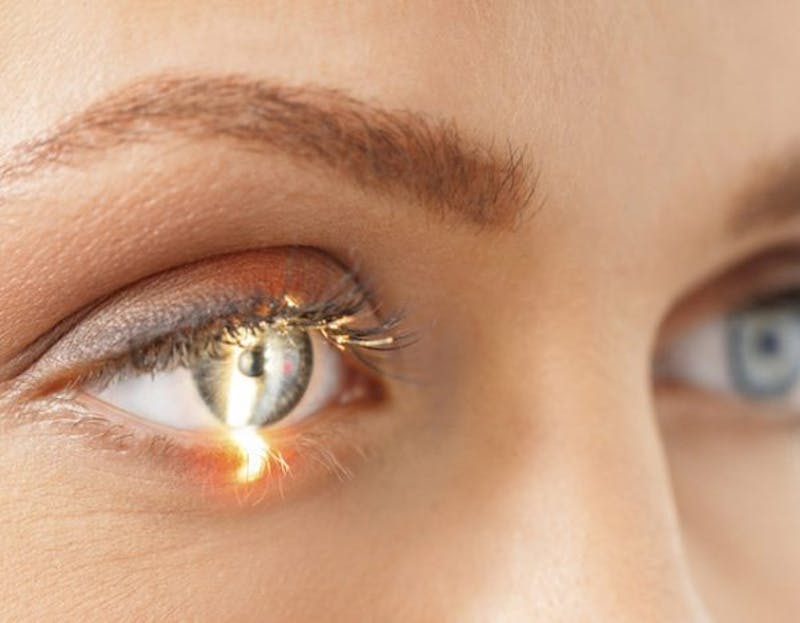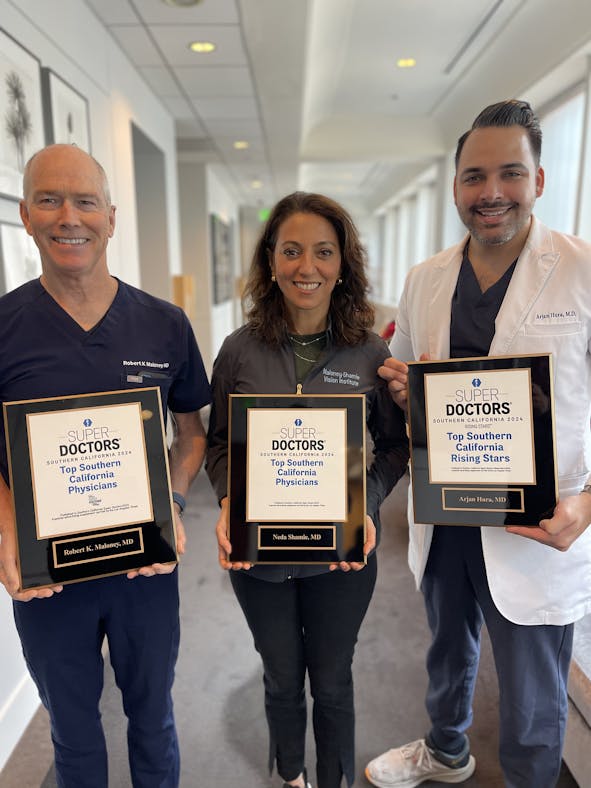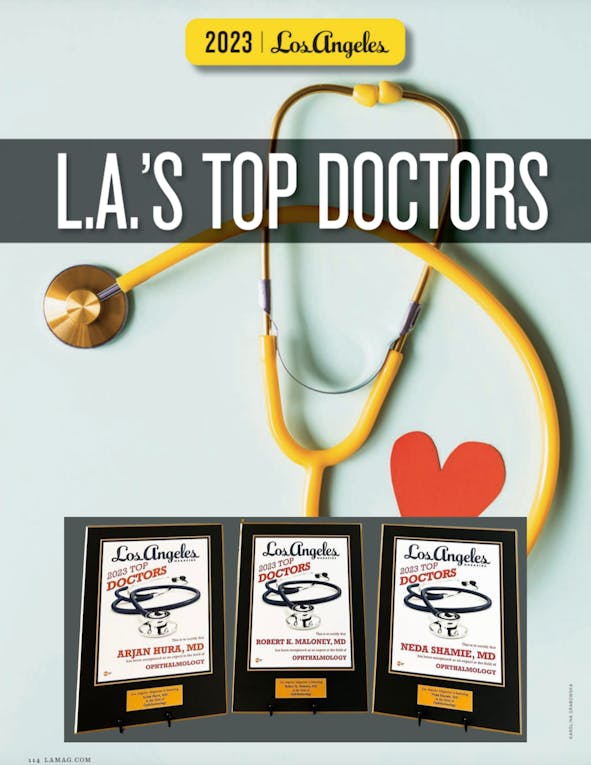Schedule a Consultation
Life Clarity Focus
Contact Us
At the May 2016 annual meeting of the American Society for Cataract and Refractive Surgery – the medical organization of surgeons specializing in vision correction and cataract surgeries – updates of several high-profile research studies of LASIK safety and performance, including the FDA PROWL study, were presented showing impressively and consistently high marks for safety, outcomes, as well as patient satisfaction.
What do these data mean for the person considering LASIK?
Ultimately, these studies support the overwhelming body of clinical evidence proving LASIK is a safe and effective vision correction option for those who qualify. Remarkably, these studies report the procedure is more likely to help symptoms of dry eye, glare, halo, starbursts and ghosting than it is to cause symptoms.
Two results of two studies in particular, the U.S. Food and Drug Administration-sponsored “Patient Reported Outcomes with LASIK (PROWL)” and an evaluation of the available scientific literature worldwide on advanced LASIK entitled, “Modern LASIK Outcomes: A Review,” conducted by ASCRS president Kerry D. Solomon, M.D., have been much anticipated by vision correction surgeons.
“Although each take a different investigative approach, these studies provide some of the best data and insights into LASIK, particularly from the patient’s perspective,” said Daniel S. Durrie, M.D. and one of the clinical investigators for the FDA PROWL study. “One of the key findings, from both studies, is with modern equipment, modern techniques and well-selected patients, good surgeons can deliver terrific results with a high degree of safety. LASIK is a great procedure.”
The FDA PROWL research was conducted as prospective, post-market, observational studies designed to develop and evaluate a patient reported outcome questionnaire for use post-LASIK. Approximately 574 subjects (262 active duty military personnel, 312 civilians from 5 investigational sites) were enrolled and asked to fill out an online questionnaire before LASIK and 3-months after LASIK.
The “Modern LASIK Outcomes: A Review” updated the work from the “LASIK World Literature Review: Quality of Life and Patient Satisfaction published in 2009 by analyzing the impact of advanced treatment profiles in LASIK (employing femtosecond laser keratomes and wavefront diagnostic/guidance). In the current work, nearly 4500 clinical study papers on the topic of LASIK were evaluated for relevancy and authority. The final data set included 97 high-quality studies that combined represented 67,893 procedures.
These substantial studies made fresh inquiries into the basics of LASIK: Is it safe? Does the procedure improve vision? What is the potential for side effects? The findings from these studies affirmed the consensus of previous research into LASIK performance:
There was particularly good news out of the FDA PROWL study about the potential for side effects, including dry eye and other visual symptoms such as glare, starbursts, ghosting and halos, post LASIK.
While a small percentage of patients may experience symptoms during the healing process, by working closely with your surgeon your symptoms can be managed and, if needed, treated to help you achieve your vision goal.
The results of these studies are consistent with the clinical experience of LASIK and underscore the commitment of surgeons and researchers to continually investigate the potential of this valuable option in vision correction. Through efforts such as these, clinicians are able to find ways to improve the technology, technique and overall patient experience with LASIK, making an already good procedure even better.
“Patients are experiencing better visual outcomes than ever before. But, LASIK is not for everyone. It’s important for those considering LASIK to choose a good surgeon and clearly understand the risks and benefits of the procedure. But, for those patients who are looking to be less dependent on their glasses or contacts, LASIK technologies and outcomes are better than they’ve ever been – the clinical research and literature backs that up,” said Dr. Solomon.
At the May 2016 annual meeting of the American Society for Cataract and Refractive Surgery – the medical organization of surgeons specializing in vision correction and cataract surgeries – updates of several high-profile research studies of LASIK safety and performance, including the FDA PROWL study, were presented showing impressively and consistently high marks for safety, outcomes, as well as patient satisfaction.
What do these data mean for the person considering LASIK?
Ultimately, these studies support the overwhelming body of clinical evidence proving LASIK is a safe and effective vision correction option for those who qualify. Remarkably, these studies report the procedure is more likely to help symptoms of dry eye, glare, halo, starbursts and ghosting than it is to cause symptoms.
Two results of two studies in particular, the U.S. Food and Drug Administration-sponsored “Patient Reported Outcomes with LASIK (PROWL)” and an evaluation of the available scientific literature worldwide on advanced LASIK entitled, “Modern LASIK Outcomes: A Review,” conducted by ASCRS president Kerry D. Solomon, M.D., have been much anticipated by vision correction surgeons.
“Although each take a different investigative approach, these studies provide some of the best data and insights into LASIK, particularly from the patient’s perspective,” said Daniel S. Durrie, M.D. and one of the clinical investigators for the FDA PROWL study. “One of the key findings, from both studies, is with modern equipment, modern techniques and well-selected patients, good surgeons can deliver terrific results with a high degree of safety. LASIK is a great procedure.”
The FDA PROWL research was conducted as prospective, post-market, observational studies designed to develop and evaluate a patient reported outcome questionnaire for use post-LASIK. Approximately 574 subjects (262 active duty military personnel, 312 civilians from 5 investigational sites) were enrolled and asked to fill out an online questionnaire before LASIK and 3-months after LASIK.
The “Modern LASIK Outcomes: A Review” updated the work from the “LASIK World Literature Review: Quality of Life and Patient Satisfaction published in 2009 by analyzing the impact of advanced treatment profiles in LASIK (employing femtosecond laser keratomes and wavefront diagnostic/guidance). In the current work, nearly 4500 clinical study papers on the topic of LASIK were evaluated for relevancy and authority. The final data set included 97 high-quality studies that combined represented 67,893 procedures.
These substantial studies made fresh inquiries into the basics of LASIK: Is it safe? Does the procedure improve vision? What is the potential for side effects? The findings from these studies affirmed the consensus of previous research into LASIK performance:
There was particularly good news out of the FDA PROWL study about the potential for side effects, including dry eye and other visual symptoms such as glare, starbursts, ghosting and halos, post LASIK.
While a small percentage of patients may experience symptoms during the healing process, by working closely with your surgeon your symptoms can be managed and, if needed, treated to help you achieve your vision goal.
The results of these studies are consistent with the clinical experience of LASIK and underscore the commitment of surgeons and researchers to continually investigate the potential of this valuable option in vision correction. Through efforts such as these, clinicians are able to find ways to improve the technology, technique and overall patient experience with LASIK, making an already good procedure even better.
“Patients are experiencing better visual outcomes than ever before. But, LASIK is not for everyone. It’s important for those considering LASIK to choose a good surgeon and clearly understand the risks and benefits of the procedure. But, for those patients who are looking to be less dependent on their glasses or contacts, LASIK technologies and outcomes are better than they’ve ever been – the clinical research and literature backs that up,” said Dr. Solomon.





© Maloney-Shamie Vision Institute. All Rights Reserved.